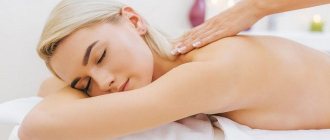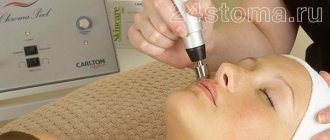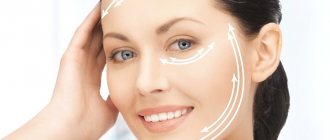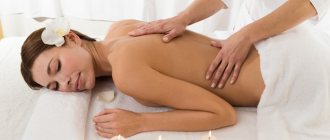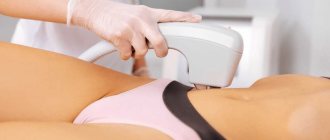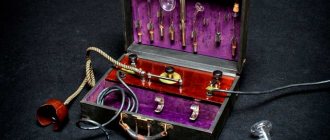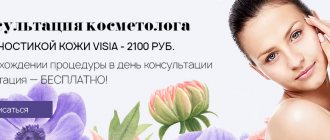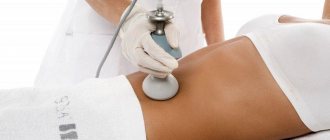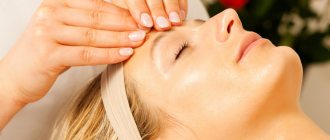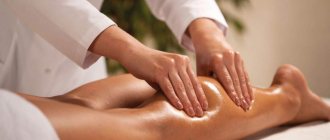Do you know classic techniques against pain and spasms, but want to learn how to work with complex and chronic cases? Do you want to become a master who, in one session, gives the client relief that another specialist could not achieve in an entire course? Do you want to attract clients who suffer from back, neck, and limb pain: office workers, professional or amateur athletes, people with spinal problems? Interested in learning how to address patients' cosmetic concerns with a non-invasive facial procedure? You have found yourself on this page, which means that you will find out the answers to your questions about myofascial massage and will be able to bring your professional plans to life!
Do you want to learn how to perform self-massage, how to learn to scan a patient’s body using your hands, how to work with overweight clients, why myofascial massage specialists earn more than their colleagues? At the end of the article there are answers to all these questions.
Understanding the concept of “fascia” in myofascial massage
This word is translated as “bandage” for a reason: fascia is a muscle sheath that envelops it like a bandage. The body has bones, muscles, internal organs - their purpose is clear, but why are fascia needed?
- The position of muscles, blood vessels, and nerves is fixed in the desired position;
- Help muscles adhere tightly to bones;
- Separate the area of one internal organ from the others;
- Accelerate lymph flow and blood circulation;
- Have a protective effect on nerves and blood vessels;
- Protect muscles from stretching and deformation.
Functions of myofascia
Fascia (translated from Latin as “bandage”) is a sheath of dense connective fibers covering blood vessels, nerves, and organs. They are part of the structure of ligaments and tendons, providing attachment of muscles to bones, forming a kind of “case” around the muscles. The fascia is responsible for motor activity and takes on all the tension that arises. Main functions of myofascia:
- Muscle mobility, transmission of movement from them to bones;
- Supporting internal organs, maintaining their correct position;
- Protection of blood vessels and nerves located in muscle tissue.
Fascial dysfunction
If their functionality is impaired, the following occurs:
- The muscles contract, the load on the fascia increases significantly;
- Trying to support the skeleton, the fibers stretch or compress, changing their original shape;
- Overexertion causes muscle spasms, which leads to damage to the fascia and the appearance of painful seals on them;
- Due to metabolic disorders, the fascia does not receive the necessary water and oxygen - a person experiences a feeling of pain in the muscles.
As a result, inflammation in muscle fibers may develop and change, which can develop into a chronic phenomenon.
The massage procedure will improve the flow of lymph and blood, the fascia will return to its original shape, be freed from tension and stagnation, which will relieve the person from painful sensations.
Healthy fascia is good, unhealthy fascia is bad!
“It will hurt and it will stop” - such a slogan is not suitable for working with fascia. In a certain percentage of cases, the pain can actually go away on its own (for example, after a person has strained his back due to sudden physical exertion), but in some situations the discomfort develops into inflammatory processes and degeneration of muscle fibers due to oxygen starvation of the cells. The pain can become chronic. “Unhealthy” fascia in the facial area means premature aging of the skin.
The effect of myofascial massage
The benefits of myofascial massage for a person of the 21st century are enormous:
- The general condition improves, pain decreases;
- Immunity increases;
- Blood and lymph flow improves, waste and toxins are removed;
- The consequences of stress are eliminated: psychological and physical;
- The condition of the skin and body improves, and signs of age decrease.
- Cosmetic problems of various areas of the face go away:
- wrinkles;
- drooping oval face;
- bags under the eyes;
- shaved;
- uneven complexion;
- double chin;
- deep wrinkles and folds associated with body tension and stress.
- Posture improves;
- The problem of swelling of the face and limbs, heaviness in the legs goes away.
How many procedures need to be done and how often
Cosmetologists do not recommend using the method until the age of 25. As long as the natural tone is maintained, no intervention is needed. At the same time, the presence of serious injuries can be considered as indications for massage. It is optimal to start procedures at the age of 30. At this time, signs of age-related changes appear and, if you start the fight right away, you can achieve pronounced results. On average, a massage course includes 10-12 sessions depending on the condition of the skin. After this, the tissues should rest. The number of courses is determined individually, taking into account the condition of the skin, existing problems and the response of the dermis to the impact.
Face and neck during myofascial massage
Myofascial massage has a healing effect: it relieves vertebral subsidence, pain and spasms in the neck, pinched nerve roots, poor lymph flow and blood circulation. The cosmetic effect is to reduce the manifestations of age-related changes, “widow’s hump”, facial swelling, wrinkles.
- Myofascial massage begins with warming up the facial tissues and working the area under the corners of the lips in a circular motion.
- Using the same movements, we work the area from the corners of the mouth to the cheekbones and back.
- Using the classical method we work on the area of the upper and lower eyelids.
- We move with pinching movements from the bridge of the nose to the temples and back.
- Using twists, we work the chin area.
- Twisting in the area of the ears, behind them.
- We find spasmodic points in the area of the face and neck using manual scanning and work on the fascia.
Back
If the master has mastered the technique of myofascial back massage, then he is guaranteed an appointment not for a month, but for two months in advance, because patients have problems such as “strained back”, “pain due to working on the computer”, “feeling of heaviness due to a sedentary position” life” is enough!
The session begins with diagnostics - one of the main stages of myofascial massage, which is not so easy to master perfectly. We’ll talk about how to learn how to conduct it like a professional at the end of the article. The session begins with the cervical-collar area. There is no specific plan for a procedure using myofascial massage techniques; each effect is individual. The master, using palpation, identifies trigger points, clamps, spasms and has a direct impact on them.
Myofascial massage helps to get rid of postural disorders in common diseases, such as scoliosis.
Legs
The “felt” technique is useful for this area - grabbing, lifting, pulling the muscle to the side and returning it to its original position. Stretching is also used. The technique is the same as in the case of the neck and back: the master finds tension points and acts on them.
Indications and contraindications
Experts note that the solution to most problems with the help of this massage is a reaction to the launch of self-healing physiological processes that the procedure provokes. This allows us to recommend myofascial facial massage for the following symptoms:
- Loss of facial skin elasticity;
- Poor muscle tone;
- Excessive fat content;
- Acne, sebaceous plugs, pimples;
- Having a double chin;
- Swelling;
- Postoperative period;
- Head moth;
- Hearing loss and other ear diseases;
- Eye diseases;
- Drooping corners of lips;
- Bruises under the eyes;
- Recovery after a stroke.
The massage can be performed even on children, which once again confirms its uniqueness.
However, despite such an impressive list of indications and beneficial qualities of this procedure, it, like any other massage, has its contraindications:
- Oncological diseases;
- Open tuberculosis;
- Presence of open wounds and bites;
- Herpes;
- Mentally unstable condition;
- Atherosclerosis;
- Allergy;
- Head injuries;
- Brain bleeding;
- Osteoporosis;
- Blood diseases;
- Heat;
- Hypertensive crisis.
Important: Before deciding to undergo this procedure, it is advisable to consult with a specialist - otherwise you can harm your health and get the opposite effect from the procedure.
Myofascial massage at home
Serious myofascial massage is definitely a procedure that should only be performed by a practitioner with a thorough knowledge of anatomy. But if you have no contraindications, but have pain in your back, neck, or limbs, you can reduce it using an independent procedure at home. Warm up the painful area with stroking and rubbing, and then lie down on a tennis ball or massage roller in that area. At the beginning of the procedure, the pain may increase slightly, but then it will begin to subside or may even disappear completely.
Myofascial massage can be performed only if the pain is definitely of a muscular nature and not inflammatory! If you influence inflammation, there is a possible risk of complications, fever, and infection of the entire body. The procedure can be performed at home every other day, daily or as needed. Sessions will not have long-term results if the pain is associated with incorrect position of the back and body while working at the computer or a sedentary lifestyle. Only if you reconsider your habits will such sessions give a good effect.
How is the session going?
At the beginning of the session, the master palpates the skin to determine the depth and degree of muscle tension. After which the specialist proceeds directly to the procedure. The procedure begins with exposure to the scalp. At the same time, a neck massage is performed. Next they move on to the face. The massage is performed taking into account the rhythms of breathing - exhalation and inhalation are performed in 5 beats. All movements should be smooth, soft and careful. During the procedure, the specialist must monitor the patient’s condition.
In case of any discomfort or malaise, the session must be interrupted. The duration of the first session should not exceed 30 minutes.
Possible complications during myofascial massage
If myofascial massage is performed by an inexperienced master, complications may occur. How to protect yourself from mistakes? How to carry out the procedure and not worry that the effect may be negative? We talk about this in the next paragraph.
But it is important to know that mild nausea, redness of the skin at the site of treatment, and increased urination are normal consequences associated with heating the tissues, accelerating lymph flow, and removing waste and toxins.
How, why, why? Answers to basic questions about myofascial massage
-How to learn to do manual scanning for spasms and trigger points?
Study the theory of anatomy and take courses under the guidance of a practicing master who, using real models as examples, will show you the stages of body scanning. Only this method will allow you to learn how to accurately identify problem points on the client’s body.
-How to do myofascial massage for obese people?
The difficulty is that it is not easy to identify problem points under the fat layer. Experienced specialists, whom we discuss below in the article, will also teach you how to work with such patients.
-How not to harm the client?
Pain points are dangerous because when exposed to them, you can achieve a negative effect instead of a positive one: the pain will intensify, the muscles may become inflamed, and the discomfort may become chronic. Improper work with the facial fascia worsens the patient's appearance. The answer is the same - choose the right specialist, do not undergo training from low-skilled specialists, of whom, unfortunately, there are a lot in the field of myofascial procedures. This technique requires thorough knowledge and precise point impact, which only a good master can teach.
-How to find new clients if you have never done myofascial massage before or performed procedures using other techniques?
The myofascial procedure addresses the most common concerns of potential patients: cosmetic concerns and concerns about pain and spasms. A master who has mastered this technique will never be left without clients. If you are a beginner, then you should start with word of mouth and advertising on social networks. If you are a master, then you can simply tell existing clients about your new service - there will be many people willing to sign up!
How to do myofascial massage: who needs to know the answer to this question?
-Massage masters who want to start their career in the profession by studying a popular technique, or specialists who want to expand the list of services.
- Cosmetologists who understand that the massage + cosmetic procedures scheme works much more effectively. Age-related changes in the face and neck are often associated with spasms, which, unfortunately, practically do not relax during injection and hardware procedures. And massage movements can work on the deep layers of skin, muscles and relieve tension, which has a positive effect on the patient’s appearance.
-SPA specialists. The healing and calming effect of myofascial massage will not leave clients a chance to go to competitors!
-Fitness trainer or sports worker. Professional athletes are susceptible to injury and fascial problems. Knowledge of these issues will help you and your trainees make your training more productive and your results better!
I want to be a sought-after specialist! Where can I learn the technique of myofascial massage?
Do not take training from inexperienced masters, who at first glance are difficult to distinguish from professionals. You will only see this when clients start coming to you with complications after your procedures! You can learn how to easily scan a patient’s body using your hands and perform a procedure that will improve the lives of hundreds of people in our courses, the program of which is available only to those who really want to develop, sincerely want to bring even more benefit and joy to clients, and also plan to increase their income !
Author of the article:
Practicing: 15 years, Teaching: 8 years
Technique
To achieve results, you must perform all actions in strict accordance with the instructions. Each department (area) has its own specific methodology.
Head
During the procedure, the impact occurs on the tendon helmet, temporal regions and areas around the ears.
Methodology:
- In the area of the scalp, use both hands to perform clockwise circular movements.
- The patient is in a lateral decubitus position. The master places his thumb in front of the ear. The remaining fingers are located in the area of the scalp.
- The master's movements alternate. First, intense circular actions are performed, then light stroking.
The duration of exposure is individual, according to the testimony of a specialist. The procedures are recommended to be performed only by experienced specialists and masters of myofascial massage.
Neck area
Massage of the neck area is carried out with extreme caution, since this area contains large main arteries and nerve endings, damage to which can be associated with health hazards. When placing your fingers in the scalp, the second hand should be on the neck. The specialist performs kneading and deep stroking. In this case, all actions must be performed with both hands. Procedures in the chin area are carried out only after the frontal and temporal lobes of the head have been treated.
The front zone of the neck and the area located behind the auricle are warmed up with both hands at once. At the same time, apply a little force. Movement techniques: rubbing, circular, rolling.
Facial zone
Myofascial facial massage (patient reviews report that the procedure is absolutely painless and safe) is performed taking into account massage lines and in strict accordance with developed techniques and methods. When massaging the face, the specialist places his fingers as follows: the thumb is in the temple area, the middle and index fingers are on the forehead. The master alternately moves his fingers towards each other, then spreads them in opposite directions. Then the master processes the lines above the eyebrows.
Using his fingers, he lightly pinches a small area of skin between the eyebrows. With the second hand, the specialist performs a light pinching, moving from the tip of the nose straight to its base. Then they move on to treating the side walls of the nose. When performing a massage, the master gradually moves to the temples through the cheekbones. After this, the upper lip is treated and moved to the ears. Next, the master goes down to the corners of the lips and performs massage actions, gradually moving to the earlobes.
Complete the facial treatment by performing massage movements in the chin area and moving towards the earlobes.
